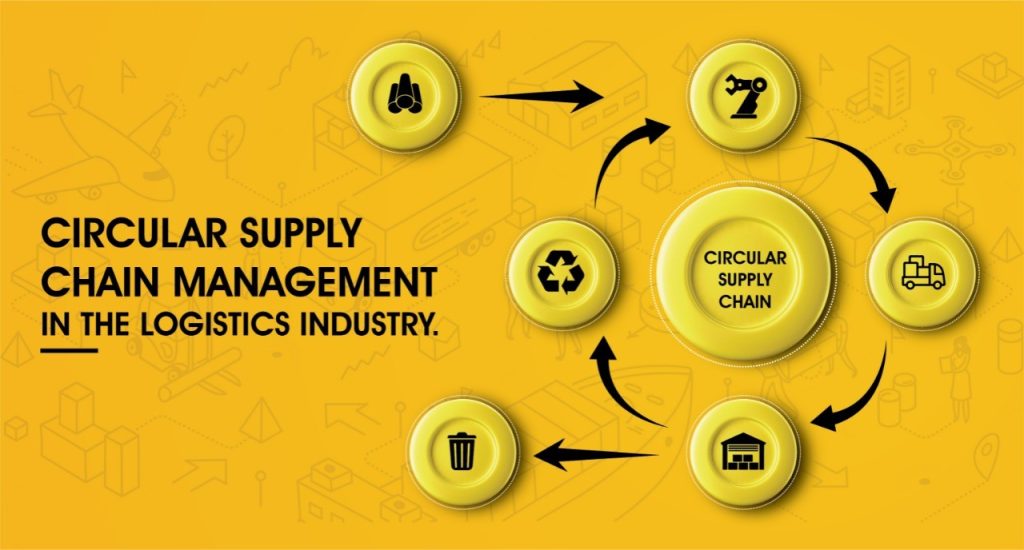
Your business’ sustainability and profitability depend on circular supply chain. Know how.
A shift in the supply chain is underway
In the present times, sustainability in business ranks highly on the list of stakeholders’ concerns. Not to forget, governments globally are stringently driving forward the mandate of running sustainable business practices to meet the metrics for climate crisis mitigation. As such, businesses across industries are transitioning to supply chains that are less wasteful, use recyclable materials and leave a smaller carbon footprint. In other words, businesses are turning to green supply chains. This transition demands a holistic change in the operational model of supply chains. This is where the concept of circular supply chain comes into play.
In a 2020 survey done by Gartner, 70% of supply chain leaders plan to invest in the circular economy.
What is circular supply chain?
A circular supply chain takes discarded materials and remakes them for resale. When the product’s life cycle reaches an end, the core materials are recovered and regenerated. Thus, this system is restorative and aims to keep resources at their highest utility and value at all times.
“What was previously viewed as waste now has value.”
Sarah Watt,
Sr. Director Analyst, Gartner Supply Chain practice
Circular supply chain works at all scales — for big and small businesses — globally and locally. It is based on three principles:
- Design out waste and economic activity that damages human health and natural systems.
- Keep products and resources in use, thus ensuring remanufacturing, reuse and recycling of products.
- Regenerate natural systems by minimising or avoiding the use of non-renewable resources.

Sourced from Datex Corp.
How is circular supply chain different from linear supply chain?
A linear supply chain is a straight path from raw materials to production to disposal. The products end up being discarded at some point in the chain. Additionally, the left-over raw materials used in production also get discarded.
A circular supply chain encourages recycling and reuse of raw materials in the manufacturing operation. They are repurposed to make another product.
Benefits of circular supply chain?
Economic benefits
- Spearheads creativity and innovation in strategy and operation.
- Enhances technological development.
- Lowers production cost and creates new profit streams.
- Improves energy efficiency.
- Lowers the exposure to volatile raw material prices.
- Reduces the threat of supply chains by natural disasters.
- Increases access to attractive government incentives.
- Affects economy-wide supply, demand and prices thus boosting overall economic growth.
- Offers the potential to create new jobs through increased innovation, entrepreneurship and business services.
- Improves customer interaction and satisfaction.
- Increases the scope of profitability for companies.
Environmental benefits
- Lowers carbon dioxide emissions.
- Reduces primary material consumption significantly.
- Enhances the value of land through higher land productivity and less waste.
Success stories
Nike’s “Reuse-A-Shoe” programme
Nike encourages customers to recycle old Nike shoes at local Nike stores. The company then turns these old shoes into grind material and transforms them into new shoes. This process offers three benefits to the company: low landfill use, low material cost and high brand image.
Renault
This French vehicle manufacturer, in 1949, was looking for ways and means to recover from the effects of WWII. They began offering parts of used vehicles at discounts, but with the same warranties and guarantees as new parts. Decades later, the same plant generates annual revenue of $270 million!
Summary
- Globally, the regulations on product recycling and disposal of resources and byproducts have become tighter.
- Businesses the world over are looking to make their supply chain green and sustainable.
- Circular supply chain turns waste into new products.
- It makes products more useful once they’re utilized and broken, instead of saturating landfills.
- It reclaims and reuses byproducts within the manufacturing process to develop new revenue streams for previously-discarded products.
- Circular supply chain can help companies reduce their material and production costs, and thus stay profitable in the current times.
- It also helps companies stay sustainable and increase brand love.
- Brands, such as Nike and Renault have already demonstrated the power of the circular supply chain.
- Adopting circular supply chain makes business sense.
Circular supply chain is the future
Circular supply chain means sustainability, which in turn is the need for the future. Want to know how you can make your supply chain productive and greener? Ask Tiger Logistics Ltd. We are a third-party logistics services provider, covering international freight forwarding, supply chain management, project logistics defense logistics and cold chain logistics. Reach out to our experts today!







